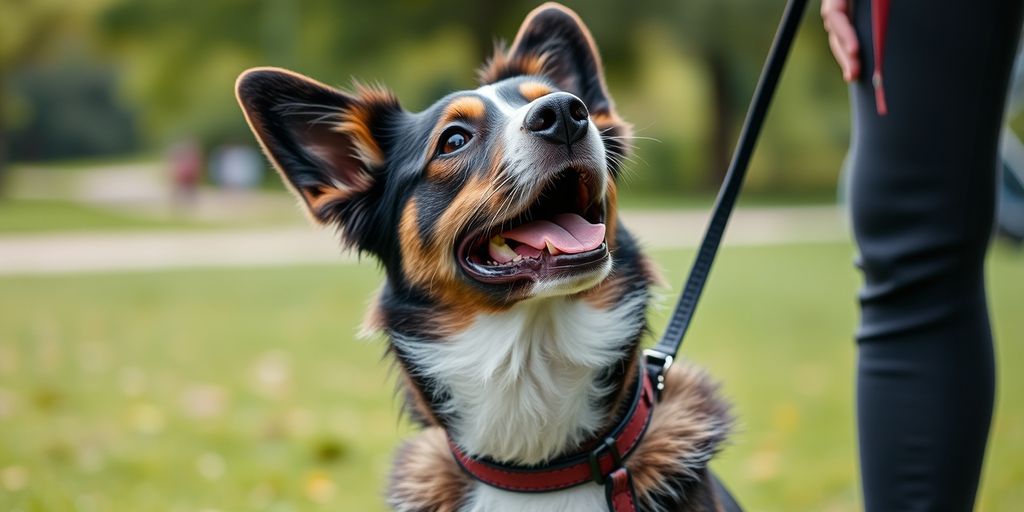Have you ever wondered if your dog could learn new tricks or improve its behavior? The answer lies in neuroplasticity, the brain’s amazing ability to change and adapt. This concept isn’t just for humans; dogs can benefit from it too. By understanding and leveraging neuroplasticity, you can unlock your dog’s potential and transform its behavior.
Table of Contents
ToggleKey Takeaways
- Neuroplasticity allows a dog’s brain to change and adapt, making it possible to learn new behaviors and skills.
- Positive reinforcement and mental stimulation are key techniques to enhance your dog’s neuroplasticity.
- A well-stimulated and trained dog not only behaves better but also enjoys a healthier and happier life.
Understanding Neuroplasticity in Dogs

What is Neuroplasticity?
Neuroplasticity is the brain’s amazing ability to reorganize itself by forming new neural connections throughout life. This means that, just like humans, dogs can learn new habits and behaviors. At its core, neuroplasticity refers to the brain’s remarkable ability to adapt and change.
How Neuroplasticity Affects Learning
When a dog’s brain is stimulated correctly, it becomes more open to learning new things. This is why mental stimulation is so important in dog training. By engaging your dog’s brain, you can help them learn faster and retain information better. This can be especially useful when trying to stop puppy biting or teaching them how to stop a dog from chewing on things they shouldn’t.
The Role of Environment in Canine Development
The environment plays a crucial role in a dog’s brain development. A stimulating environment with plenty of opportunities for learning and exploration can enhance neuroplasticity. This means that the more enriched your dog’s environment is, the better they will be at adapting to new situations and learning new behaviors. This is particularly important when figuring out how to stop a puppy from biting or other unwanted behaviors.
Creating a stimulating environment for your dog can lead to a well-behaved and happy pet. The right environment can make all the difference in unlocking your dog’s potential.
Techniques to Enhance Canine Neuroplasticity

Positive Reinforcement Training
Positive reinforcement training is a powerful method to boost your dog’s brain. By rewarding good behavior with treats, praise, or play, you encourage your dog to repeat those actions. This method taps into the brain’s ability to form new connections, making learning more effective. It’s important to be consistent and patient, as this will help your dog understand what is expected.
Mental Stimulation Activities
Keeping your dog’s mind active is crucial for their development. Activities like interactive puzzle toys, fetch toys, and tug-of-war ropes provide both physical and mental stimulation. These activities not only keep your dog engaged but also help in reshaping their behavior. Scent games and training sessions are excellent ways to challenge your dog’s brain and keep them sharp.
Socialization and Its Impact
Socialization plays a significant role in enhancing neuroplasticity in dogs. Exposing your dog to different environments, people, and other animals helps them adapt and learn new behaviors. This exposure is essential for their overall development and well-being. Proper socialization can lead to a more balanced and well-behaved dog, making it easier to train them in various settings.
A well-socialized dog is more adaptable and less likely to develop behavioral issues. Ensuring your dog has positive experiences with new situations can greatly enhance their ability to learn and grow.
Real-Life Applications of Neuroplasticity in Training

Case Studies of Successful Training
Neuroplasticity has been a game-changer in dog training. For example, Maggie, a dog with a severe jumping problem, was trained using mental stimulation techniques. Over time, her behavior improved significantly, showcasing the power of neuroplasticity. This method leverages the brain’s ability to create new neural pathways, allowing for better movement and adaptation.
Adapting Techniques for Different Breeds
Different breeds have unique learning styles. By understanding these, trainers can adapt their methods to suit each dog. For instance, while a Border Collie might excel with puzzle games, a Labrador might respond better to fetch-based activities. The key is to provide the right mental stimulation to tap into each breed’s potential.
Long-Term Benefits of Neuroplasticity in Dogs
The long-term benefits of neuroplasticity in dogs are profound. Dogs trained with these methods tend to be more obedient, less anxious, and healthier overall. They also form stronger bonds with their owners, leading to a happier and more harmonious household.
Unlocking your dog’s potential through neuroplasticity not only improves their behavior but also enhances their overall well-being. It’s a win-win for both the dog and the owner.
Challenges and Considerations in Canine Training

Common Misconceptions about Dog Training
Many people believe that training a dog is a quick process. However, it requires time, patience, and consistency. One common myth is that older dogs can’t learn new tricks. Dogs of all ages can learn; it just might take a bit longer for older dogs. Another misconception is that punishment is an effective training method. In reality, positive reinforcement is far more effective and builds a stronger bond between you and your dog.
The Importance of Consistency
Consistency is key in dog training. Whether it’s sticking to a schedule or using the same command words, being consistent helps your dog understand what is expected. For example, if you want to create training puppy routines, make sure to practice daily. This helps in setting clear expectations and speeds up the learning process. Inconsistent training can confuse your dog and slow down progress.

Recognizing Signs of Stress in Dogs
Training can sometimes be stressful for dogs. It’s important to recognize signs of stress, such as excessive panting, whining, or avoiding eye contact. If you notice these signs, it might be time to take a break. Overstressing your dog can lead to negative behaviors like puppy biting or excessive barking. Always ensure that training sessions are short and enjoyable to keep your dog engaged and happy.
Training is not just about teaching commands; it’s about building a trusting relationship with your dog. Patience and understanding go a long way in achieving this goal.
Training dogs can be tough. You need to think about many things, like your dog’s age, breed, and personality. But don’t worry! You can learn simple ways to make your dog behave better. Visit our website to find out more and start your journey to a well-behaved dog today.
Conclusion
In conclusion, understanding and applying the science of neuroplasticity in canine training can truly unlock your dog’s potential. By engaging your dog’s brain through mental stimulation and positive reinforcement, you can transform unwanted behaviors into desirable ones. This approach not only helps in solving behavioral issues but also strengthens the bond between you and your furry friend. Remember, every dog has the capacity to learn and adapt, and with the right techniques, you can help your dog become more obedient, happier, and healthier. So, start your journey today and witness the amazing changes in your dog’s behavior and overall well-being.



